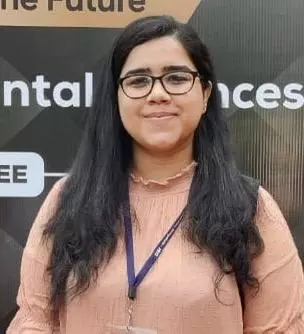- Home
- Medical news & Guidelines
- Anesthesiology
- Cardiology and CTVS
- Critical Care
- Dentistry
- Dermatology
- Diabetes and Endocrinology
- ENT
- Gastroenterology
- Medicine
- Nephrology
- Neurology
- Obstretics-Gynaecology
- Oncology
- Ophthalmology
- Orthopaedics
- Pediatrics-Neonatology
- Psychiatry
- Pulmonology
- Radiology
- Surgery
- Urology
- Laboratory Medicine
- Diet
- Nursing
- Paramedical
- Physiotherapy
- Health news
- Fact Check
- Bone Health Fact Check
- Brain Health Fact Check
- Cancer Related Fact Check
- Child Care Fact Check
- Dental and oral health fact check
- Diabetes and metabolic health fact check
- Diet and Nutrition Fact Check
- Eye and ENT Care Fact Check
- Fitness fact check
- Gut health fact check
- Heart health fact check
- Kidney health fact check
- Medical education fact check
- Men's health fact check
- Respiratory fact check
- Skin and hair care fact check
- Vaccine and Immunization fact check
- Women's health fact check
- AYUSH
- State News
- Andaman and Nicobar Islands
- Andhra Pradesh
- Arunachal Pradesh
- Assam
- Bihar
- Chandigarh
- Chattisgarh
- Dadra and Nagar Haveli
- Daman and Diu
- Delhi
- Goa
- Gujarat
- Haryana
- Himachal Pradesh
- Jammu & Kashmir
- Jharkhand
- Karnataka
- Kerala
- Ladakh
- Lakshadweep
- Madhya Pradesh
- Maharashtra
- Manipur
- Meghalaya
- Mizoram
- Nagaland
- Odisha
- Puducherry
- Punjab
- Rajasthan
- Sikkim
- Tamil Nadu
- Telangana
- Tripura
- Uttar Pradesh
- Uttrakhand
- West Bengal
- Medical Education
- Industry
Pioneering Retinal-Surgery Robot from University of Utah Shows Early Promise - Video
|
Overview
When even the most highly trained surgeons perform procedures on the retina-one of the smallest, most delicate parts of the human body-the stakes are high. Surgeons must account for patients’ breathing, snoring, and eye movements, along with their own involuntary hand tremors, while they work on a layer of cells less than a millimeter thick. That’s why researchers at the University of Utah’s John A. Moran Eye Center and the John and Marcia Price College of Engineering have collaborated to create a new robotic surgery device that aims to give surgeons “superhuman” hands.
The robot itself is extremely precise, executing movements as small as one micrometer (smaller than a single human cell). It is mounted directly to the patient’s head using a helmet, such that subtle (and sometimes not so subtle) movements of the patient’s head are compensated for, keeping the eye quite still from the perspective of the robot. The robot also scales down the surgeon’s movements, measured using a handheld robotic device known as a haptic interface, to the much smaller surgical site within the eye, compensating for hand tremors along the way.
The researchers successfully tested the robot using enucleated pig eyes, publishing their results this week in the journal Science Robotics. The study was led by Jake Abbott, a professor in the U’s Department of Mechanical Engineering, and Moran Eye Center retinal specialist Paul S. Bernstein.
Because the device is not yet approved to operate on human subjects, testing required a human volunteer fitted with special goggles that allowed an animal eye to be mounted just in front of their natural eye. This allowed the researchers to test the robot’s ability to compensate for head motion and correct for hand tremors, all while operating on animal tissue, at no risk to the volunteer. These results demonstrate the robot has the potential to improve patient care, according to co-author Eileen Hwang, a Moran Eye Center retinal surgeon.
Ref: Nicholas R. Posselli et al. Head-mounted surgical robots are an enabling technology for subretinal injections.Sci.Robot.10,eadp7700(2025).DOI:10.1126/scirobotics.adp7700



